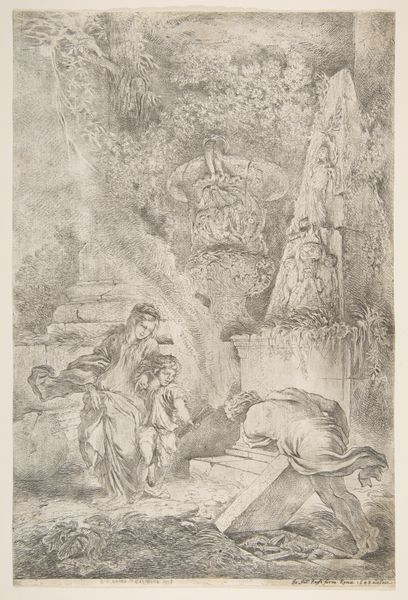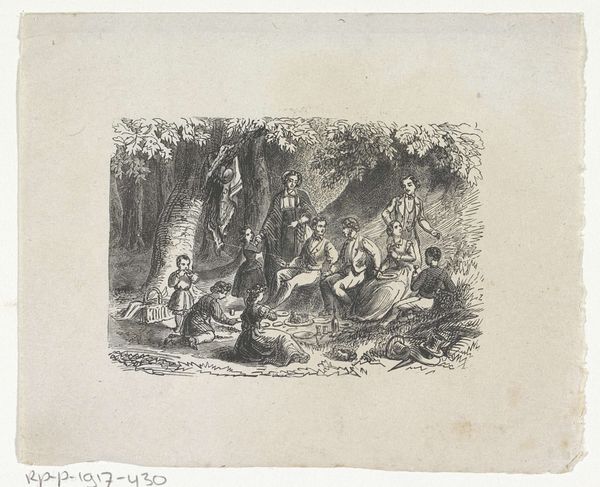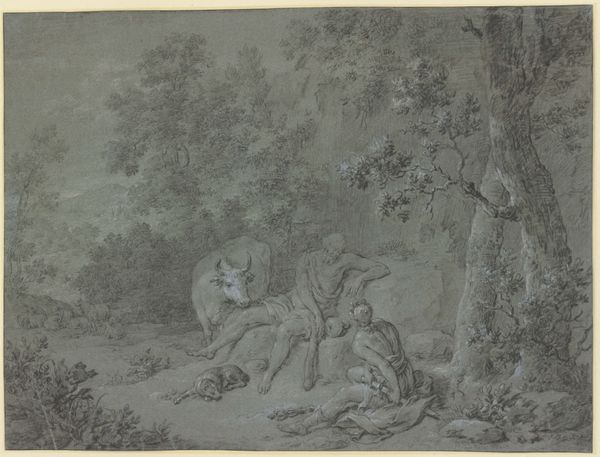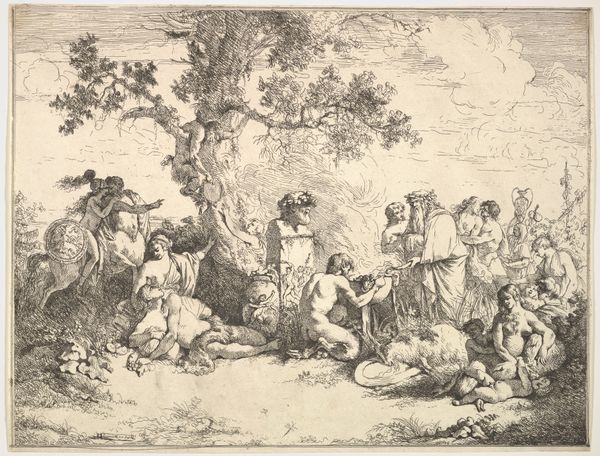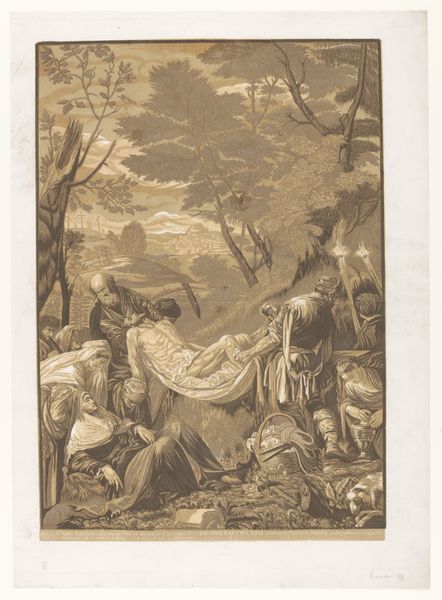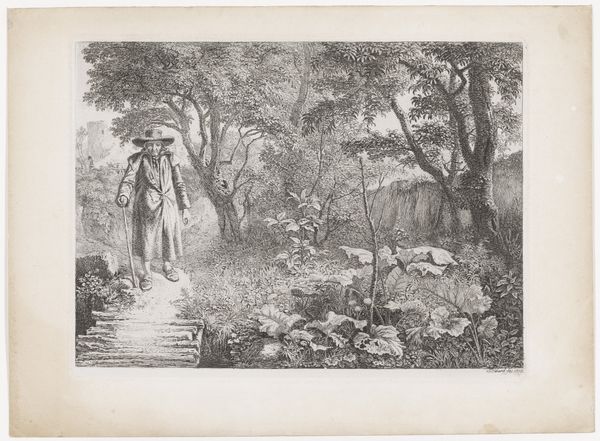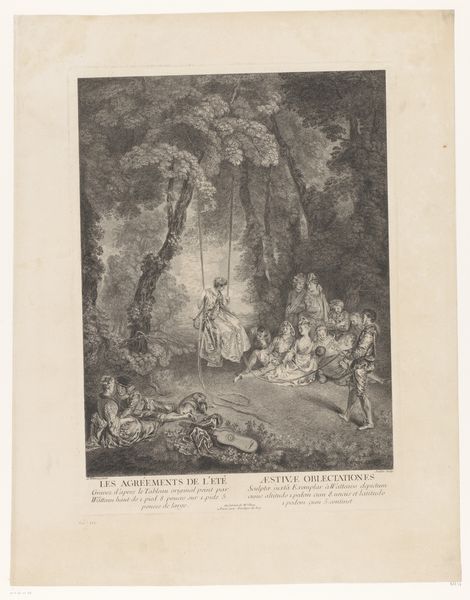
drawing, print, ink
#
drawing
#
narrative-art
# print
#
pen sketch
#
landscape
#
figuration
#
ink
#
romanticism
#
history-painting
Dimensions: Mount: 9 3/8 × 12 3/8 in. (23.8 × 31.5 cm) Sheet: 3 9/16 × 5 7/8 in. (9 × 15 cm)
Copyright: Public Domain
Editor: So, here we have Rodolphe Bresdin's "The Death of Uncas," an ink drawing from 1839. It depicts what looks like a final scene or memorial in a forest, filled with figures. It definitely carries a Romantic era sense of drama and solemnity. What jumps out at you when you see this? Curator: Considering its source material from James Fenimore Cooper’s *The Last of the Mohicans*, this drawing presents an interesting challenge to prevailing historical narratives. Bresdin, though working within Romanticism, presents a vision steeped in the cultural anxieties of the time. What do you make of the way the figures are positioned in relation to each other? Editor: It feels very staged. Some figures seem like mourners, others onlookers. Uncas, lying down, is the central figure, but he's surrounded by others who almost overshadow him. Is this staging deliberate, you think? Curator: Absolutely. Consider the politics of imagery at play. Cooper’s novel, while seemingly sympathetic to Native Americans, participates in a larger narrative of colonialism and "the vanishing race." Bresdin, whether consciously or not, echoes this. The composition highlights Uncas’s death as a spectacle. Do you think this drawing idealizes or critiques that narrative? Editor: That’s a tough question. The somber mood suggests respect, but placing Uncas’s death as central entertainment complicates any straightforward sense of mourning. It highlights the public consumption of a tragic event. Perhaps, Bresdin intended this sense of ambiguity? Curator: Precisely! By exploring such visual tensions, the artwork enters into a critical dialogue with its historical context. Bresdin prompts the viewer to contemplate the complexities inherent within representations of cultural contact. Editor: That really shifts how I see the drawing. It’s no longer just a depiction of a death, but also commentary on how that death is framed and understood in society. I appreciate the more layered perspective. Curator: It underlines how crucial it is to view artworks like this critically, appreciating its historical context, while seeing its cultural significance.
Comments
No comments
Be the first to comment and join the conversation on the ultimate creative platform.
